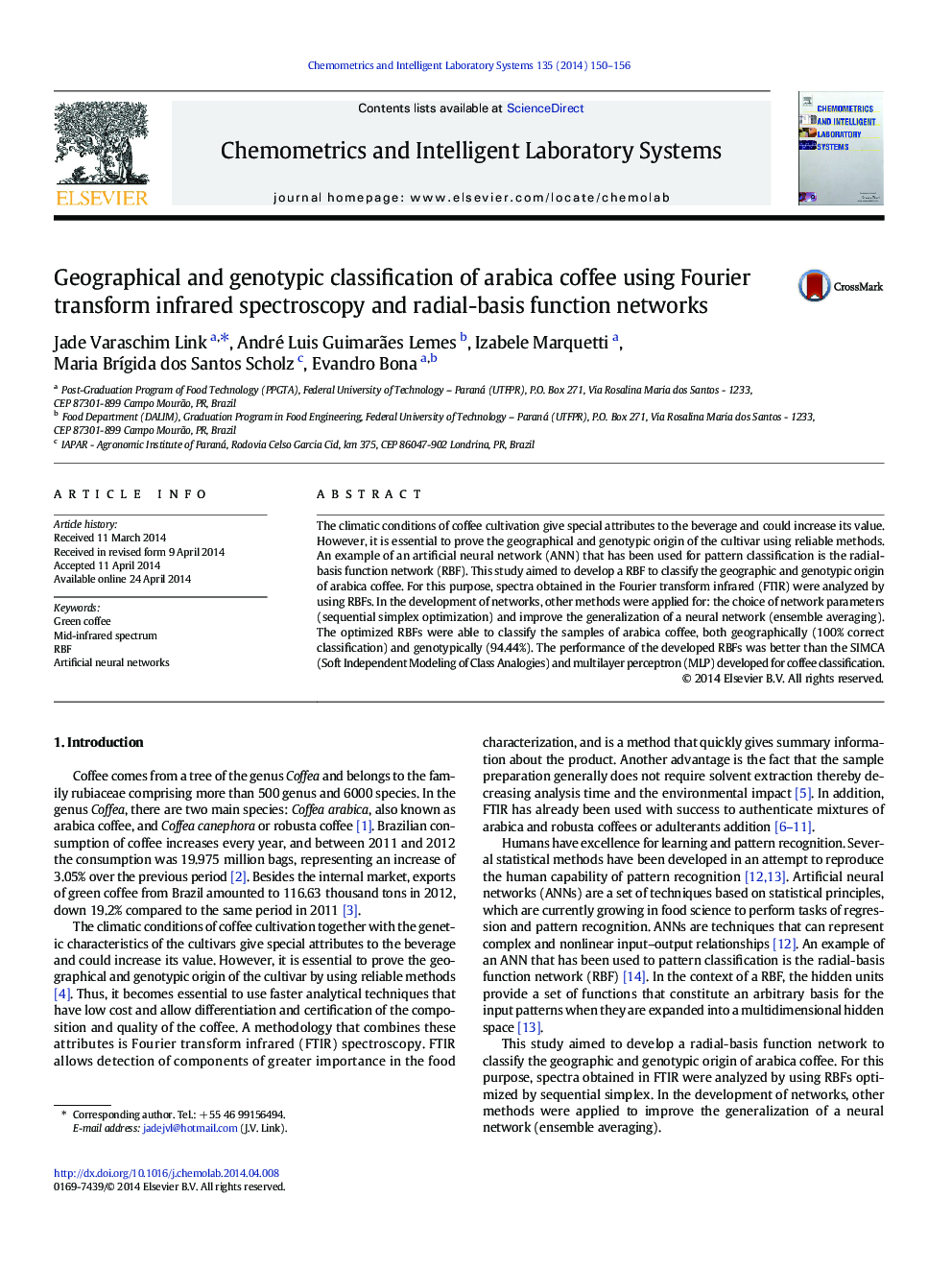| کد مقاله | کد نشریه | سال انتشار | مقاله انگلیسی | نسخه تمام متن |
|---|---|---|---|---|
| 1180839 | 1491543 | 2014 | 7 صفحه PDF | دانلود رایگان |
• The RBFs were able to classify the samples of coffee.
• The genotypic classification is more difficult than geographical classification.
• The RBFs showed better results when compared with other methods.
• The networks that used the range 1900–800 cm− 1 of the spectrum had better results.
• The combination of RBFs and FTIR proved to be an effective tool for classification.
The climatic conditions of coffee cultivation give special attributes to the beverage and could increase its value. However, it is essential to prove the geographical and genotypic origin of the cultivar using reliable methods. An example of an artificial neural network (ANN) that has been used for pattern classification is the radial-basis function network (RBF). This study aimed to develop a RBF to classify the geographic and genotypic origin of arabica coffee. For this purpose, spectra obtained in the Fourier transform infrared (FTIR) were analyzed by using RBFs. In the development of networks, other methods were applied for: the choice of network parameters (sequential simplex optimization) and improve the generalization of a neural network (ensemble averaging). The optimized RBFs were able to classify the samples of arabica coffee, both geographically (100% correct classification) and genotypically (94.44%). The performance of the developed RBFs was better than the SIMCA (Soft Independent Modeling of Class Analogies) and multilayer perceptron (MLP) developed for coffee classification.
Journal: Chemometrics and Intelligent Laboratory Systems - Volume 135, 15 July 2014, Pages 150–156
